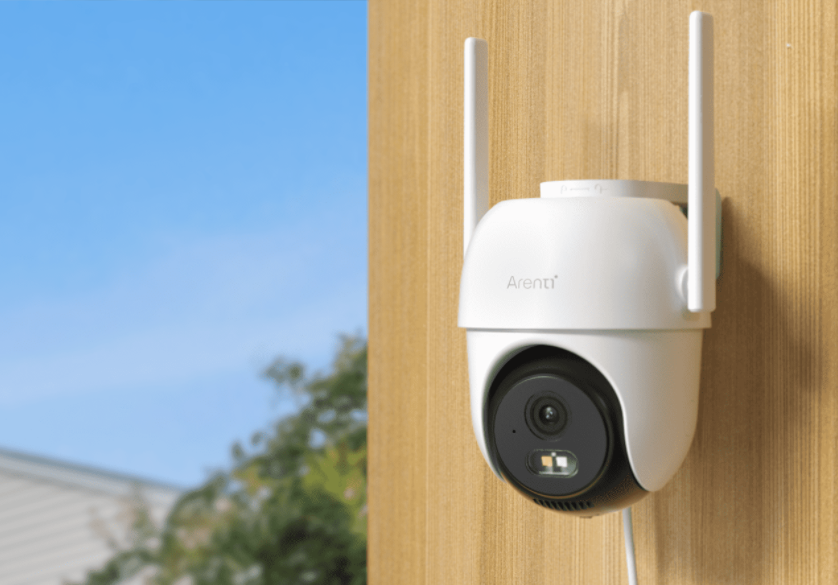What is the Best Way to Place Outdoor Security Cameras?
Aug 07,2023 | Awals S

Outdoor security cameras play a crucial role in keeping our homes and businesses safe from potential threats. But where and how we install them can significantly impact their effectiveness. In this article, we will delve into the best practices for placing outdoor security cameras to maximize their coverage and enhance overall security. We will explore different scenarios, analyze potential blind spots, and provide real-life examples to help you make informed decisions for your security setup.
The Importance of Proper Camera Placement
When it comes to outdoor security cameras, placement is everything. Installing them strategically can make a world of difference in detecting and deterring intruders. A poorly placed camera may leave vulnerable spots unmonitored, compromising your security efforts. Therefore, understanding the significance of proper placement is crucial before diving into the installation process.
Covering the Entrances and Exits
One of the fundamental principles of outdoor camera placement is focusing on entrances and exits. These areas are prime targets for intruders, and having cameras monitoring them can act as a strong deterrent. Place cameras above the front door, back door, and any other access points like side gates or basement windows. By doing so, you capture valuable footage of anyone entering or leaving your property.
Overlooking Vulnerable Areas
Identifying vulnerable spots around your property is essential for comprehensive security coverage. Areas with limited visibility, such as dark corners or blind alleys, can be potential hiding spots for intruders. Placing cameras to overlook these areas helps mitigate potential risks. Consider the layout of your property and think like a potential intruder to pinpoint these vulnerable spots.
Height and Angle Matter
The height and angle at which you install outdoor security cameras can significantly impact their effectiveness. Mounting cameras too low makes them susceptible to vandalism, while mounting them too high might compromise the image quality. Aim for a height that provides a clear view of the target area while ensuring it remains out of reach for tampering.
Avoiding Obstructions
When placing outdoor security cameras, avoid obstructions that can hinder their line of sight. Trees, bushes, and other objects might obstruct the camera's view, rendering them less effective. Regularly trim foliage and ensure there are no obstacles obstructing the camera's field of view.
Combining Different Camera Types
To achieve comprehensive security coverage, consider using different types of cameras. For example, a wide-angle camera can cover a broad area like the front yard, while a PTZ (pan-tilt-zoom) camera allows you to focus on specific points with the ability to zoom in for more detail. Mixing and matching camera types can enhance your surveillance capabilities.
Securing the Cameras
While focusing on camera placement, don't forget to secure the cameras themselves. Ensure they are mounted on sturdy surfaces and well-protected from the elements. Waterproof and weather-resistant casings are vital to ensure the cameras' longevity and functionality.
Utilizing Artificial Lighting
Proper lighting is crucial for outdoor security cameras, especially during nighttime surveillance. Consider installing motion-activated lights around the camera locations. This not only provides better visibility for the cameras but also acts as an additional deterrent for potential intruders.
Regular Maintenance and Testing
Once your outdoor security cameras are in place, it's essential to maintain and test them regularly. Check for any signs of wear and tear, clean the lenses, and ensure they are functioning correctly. Conduct periodic tests to verify that all cameras have a clear view and are recording properly.
Real-Life Example: Securing a Residential Property
Let's take a look at a real-life example of how proper camera placement can secure a residential property. In this scenario, imagine a house with a front yard, backyard, and two side entrances.
- Front Yard: Install a wide-angle camera above the front door, covering the driveway and the street in front of the house. This camera will capture any approaching visitors or suspicious activities in the vicinity.
- Backyard: Place a PTZ camera on the rear wall of the house, overlooking the entire backyard. This camera can be controlled remotely to zoom in on any unusual activity, such as unauthorized access or attempted break-ins.
- Side Entrances: Install fixed cameras on both side entrances, capturing anyone entering or leaving through these access points. Make sure these cameras are mounted at a height that provides an unobstructed view.
By combining different camera types strategically, this residential property achieves comprehensive coverage, securing all potential entry points and vulnerable areas.
What is the Best Way to Place the Arenti OP1 4MP UHD Outdoor Camera?
The Arenti OP1 4MP UHD Outdoor Camera is a powerful surveillance tool designed to enhance the security of your outdoor spaces. To make the most of this camera's capabilities, proper placement is crucial. In this guide, we will explore the best practices for positioning the Arenti OP1 camera to optimize its performance and ensure comprehensive coverage of your property.
Assessing Your Surveillance Needs
Before installing the Arenti OP1 camera, take some time to assess your specific surveillance needs. Identify the areas you want to monitor, such as entry points, driveways, or backyards. Understanding your requirements will help you determine the number of cameras needed and their ideal placements.
Outdoor Camera Mounting Height and Angle
The optimal mounting height and angle play a vital role in achieving the best results with the Arenti OP1 camera. Aim to position the camera at a height that provides an unobstructed view of the target area. A height of about 7 to 10 feet (2.1 to 3 meters) is usually suitable for most outdoor installations.
Regarding the camera angle, ensure that it covers the desired field of view. The camera should be slightly tilted downwards to capture activity on the ground while avoiding excessive sky or ground coverage. Test the camera's angle before finalizing its placement.
Wireless Connectivity Considerations
The Arenti OP1 camera supports both 2.4GHz and 5GHz Wi-Fi connectivity options. When choosing between the two, consider the range and interference factors. The 2.4GHz band typically has a better range but may experience more interference from other devices like routers and microwaves. On the other hand, the 5GHz band provides faster data rates and is less prone to interference but has a slightly shorter range.
If your Wi-Fi router is nearby and provides stable coverage, the 5GHz option can offer smoother video streaming. However, if you need the camera to cover a more extensive outdoor area, the 2.4GHz band might be a better choice for better signal penetration.
Weatherproofing and Camera Housing
The Arenti OP1 camera is designed for outdoor use and comes with weatherproofing to withstand various environmental conditions. However, it's still essential to consider the direction of rain, snow, or direct sunlight when positioning the camera. Placing the camera under an eave or a sheltered spot can provide extra protection from the elements and prolong its lifespan.
Moreover, some users prefer additional camera housing or covers for added protection against extreme weather conditions or potential tampering. Consider your specific location and climate to decide if additional protection is necessary.
Avoiding Obstructions and Glare
To ensure clear and reliable footage, avoid placing the camera behind objects that could obstruct its view, such as trees, branches, or fences. Additionally, be mindful of potential glare from direct sunlight, which may impact the camera's image quality. Position the camera in a way that minimizes the chance of glare during different times of the day.
Test and Fine-Tune
After installing the Arenti OP1 camera, take the time to test its performance and fine-tune its position if necessary. Use the Arenti app or the web interface to view the camera's live feed and make adjustments as needed. Check for any blind spots or areas that might need better coverage and readjust the camera accordingly.
Conclusion
Properly placing outdoor security cameras is vital for safeguarding your property and loved ones. Remember to focus on entrances and vulnerable spots, pay attention to camera height and angle, avoid obstructions, and combine different camera types for optimal coverage. Regular maintenance and testing will ensure that your cameras remain effective over time. With careful consideration and planning, you can create a robust and reliable outdoor security camera setup that brings peace of mind and enhances your overall security.
Frequently Asked Questions (FAQs) About Camera Placement
1. What factors should I consider when deciding where to place a security camera?
When deciding where to place a security camera, several factors come into play, including the property's layout, entry points, vulnerable areas, camera angle, potential obstructions, and the camera's range. Assessing these factors will help you identify the most strategic and effective locations for camera placement.
2. How high should I mount my security cameras?
The ideal mounting height for security cameras is generally between 7 to 10 feet (2.1 to 3 meters) above the ground. This height provides an optimal balance between capturing a clear view of the area while keeping the camera out of easy reach from potential vandals.
3. Can I install security cameras indoors as well as outdoors?
Yes, security cameras can be installed both indoors and outdoors. Indoor cameras are suitable for monitoring interior spaces like living rooms, hallways, or offices, while outdoor cameras are designed to withstand weather elements and secure the exterior of your property.
4. How many cameras do I need to cover my entire property effectively?
The number of cameras you need depends on the size and layout of your property. For comprehensive coverage, focus on placing cameras at key entry points, such as front and back doors, windows, and areas with limited visibility. Additionally, consider using wider-angle cameras to cover broader areas effectively.
5. Should I consider using a combination of different camera types?
Yes, using a combination of different camera types can enhance your surveillance capabilities. For example, wide-angle cameras are excellent for covering broad areas, while PTZ (pan-tilt-zoom) cameras allow you to zoom in on specific points for more detail. Mixing and matching camera types can provide comprehensive coverage and flexibility.






